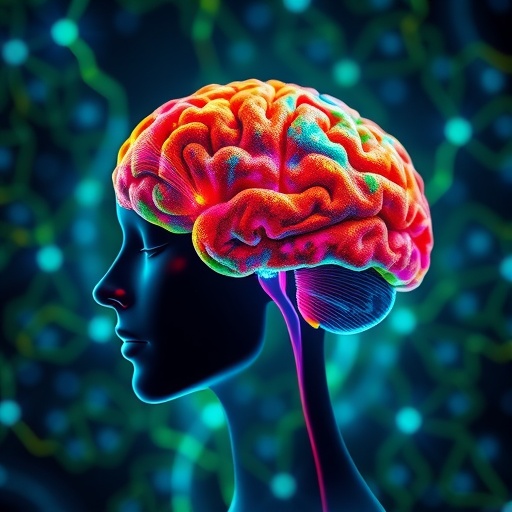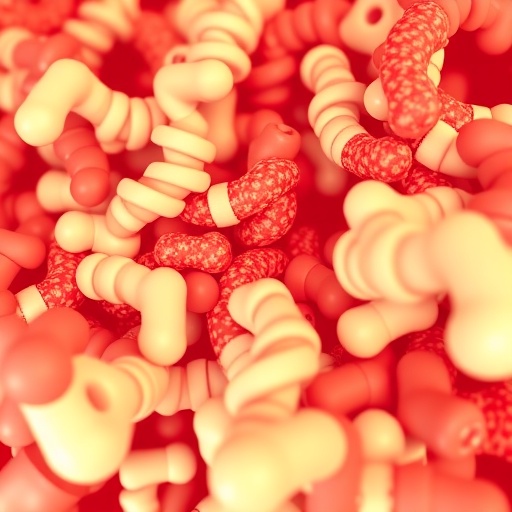In a groundbreaking discovery, researchers at the Perelman School of Medicine, University of Pennsylvania, have unveiled new insights into how psilocybin—the psychoactive compound found in certain species of psychedelic mushrooms—interacts with specific brain circuits to alleviate pain and mood disorders. Chronic pain, affecting over 1.5 billion individuals globally, often coexists with depression and anxiety, creating a complex neurobiological feedback loop that exacerbates suffering and impairs quality of life. This study, published in the prestigious journal Nature Neuroscience, delineates the neural mechanisms by which psilocybin modulates pain and affective symptoms, opening promising avenues for non-opioid, non-addictive therapeutics.
The interdisciplinary team utilized sophisticated preclinical models of chronic pain in rodents, including nerve injury-induced and inflammatory pain paradigms, to meticulously analyze the behavioral and neurological effects of psilocybin administration. They demonstrated that a single dose of psilocybin significantly diminishes nociceptive responses as well as anxiety- and depression-like behaviors driven by chronic pain states. Remarkably, these therapeutic effects persisted for nearly two weeks post-administration, suggesting durable neural adaptations. Psilocybin’s pharmacodynamics hinge upon partial agonism of serotonin receptor subtypes 5-HT2A and 5-HT1A, functioning more akin to a modulatory dimmer switch rather than a blunt activator or inhibitor, allowing for refined tuning of serotonergic signaling pathways implicated in both nociception and mood regulation.
To identify the neuroanatomical loci responsible for psilocybin’s effects, investigators administered the active metabolite psilocin via direct microinjections into discrete central nervous system regions. Using high-resolution fluorescent microscopy techniques that visualize real-time neuronal activity through bioluminescent markers, they pinpointed the anterior cingulate cortex (ACC)—a prefrontal brain region integral to the cognitive and emotional processing of pain—as a critical node. Psilocin microinjection into the ACC recapitulated the analgesic and mood-elevating effects observed with systemic administration, whereas spinal cord injections failed to produce comparable relief. This specificity underscores the centrality of top-down cortical modulation over local nociceptive pathways, suggesting psilocybin’s action primarily involves higher-order brain circuitries that integrate sensory and affective dimensions of pain.
This nuanced modulation bypasses peripheral sites of injury, offering a paradigm shift in chronic pain management. Current standard-of-care therapies often rely heavily on opioid analgesics, which pose risks of tolerance, dependency, and adverse side effects. Psilocybin’s unique capacity to alleviate both pain and comorbid affective disturbances without eliciting addictive behaviors positions it as a compelling candidate for safer, multimodal intervention strategies. The dual benefit of symptomatic pain reduction alongside mood enhancement has the potential to disrupt the vicious cycle wherein chronic suffering fuels psychological distress, which in turn amplifies pain perception.
The implications of these findings reach beyond pain medicine. The neural circuits engaged by psilocybin overlap with those implicated in a spectrum of neuropsychiatric disorders characterized by circuit dysregulation, including addiction and post-traumatic stress disorder (PTSD). By fine-tuning dysfunctional circuitry, psilocybin and related psychedelics could revolutionize therapeutic approaches for these conditions, which currently lack robust, broadly effective pharmacotherapies. However, clinical translation requires cautious investigation to establish efficacy, safety, dosing parameters, and the long-term stability of neural reconfiguration induced by psychedelic compounds.
Joseph Cichon, MD, PhD, lead author and assistant professor of Anesthesiology and Critical Care, emphasizes the complex bidirectional relationship between chronic pain and depression commonly encountered in perioperative settings. Surgical trauma can exacerbate both nociceptive and affective symptoms, complicating recovery trajectories. While psilocybin’s demonstrated effects hold promise for addressing both facets simultaneously, the unique physiological and psychological stresses imposed by surgery mandate rigorous clinical trials to ascertain the suitability of psychedelic-assisted interventions in these contexts. Moreover, anesthesiology practice involves delicate neuropharmacological balancing, underscoring the need for integrated protocols rooted in mechanistic understanding.
Further research led by Stephen Wisser, a PhD neuroscience candidate in Dr. Cichon’s laboratory, aims to elucidate the optimal dosing regimens, frequency of administration, and the molecular underpinnings of neuroplastic changes sustained after psilocybin exposure. Given the observed prolonged behavioral improvements in animal models, understanding the capacity of the brain’s pain and mood circuits to rewire provides fundamental insights into how psychedelics may provide enduring relief rather than transient symptomatic palliation. This work could lead to development of targeted interventions that harness endogenous neuroplasticity, maximizing therapeutic gain while minimizing exposure.
The study’s robust experimental design combined state-of-the-art techniques, including fluorescent calcium imaging and region-specific receptor modulation, to validate hypotheses on receptor-specific activation and downstream circuit engagement. The findings highlight the anterior cingulate cortex’s pivotal role in gating both sensory input and emotional valuation of pain—a duality often overlooked in traditional analgesic strategies that focus solely on nociceptive transmission. This integrative approach aligns with emerging paradigms viewing chronic pain as a multidimensional phenomenon requiring circuit-based therapeutic targeting.
Funding from the National Institutes of Health and the American Society of Regional Anesthesia and Pain Medicine attests to the critical relevance of this research. As the healthcare community grapples with the ongoing opioid crisis and the limitations of existing pain management modalities, psychedelics such as psilocybin offer a beacon of hope. Their historical stigmatization is slowly being replaced by rigorous scientific inquiry revealing multifaceted neurobiological mechanisms and therapeutic potential.
Penn Medicine’s multidisciplinary team exemplifies the forefront of neuroscience and anesthesiology collaboration, driving innovation that bridges molecular pharmacology and clinical pain treatment. Their pioneering work contributes to an evolving narrative that psychedelic compounds, once relegated to fringe status, might soon integrate into mainstream medicine as transformative tools for chronic pain and mental health.
In summary, this landmark research elucidates how psilocybin modulates key brain circuits involved in pain and mood regulation, particularly emphasizing the anterior cingulate cortex’s role in integrating these complex processes. By leveraging advanced neuroimaging and animal behavioral models, the investigators provide compelling evidence that psilocybin’s unique receptor interactions enact durable improvements in both sensory and affective dimensions of pain. These insights pave the way for novel non-addictive therapies capable of breaking the chronic pain-depression cycle that plagues millions worldwide, underscoring psychedelics’ resurgence as potent neurotherapeutics.
Subject of Research: Neural mechanisms of psilocybin in chronic pain and mood regulation
Article Title: Penn Medicine Researchers Identify Brain Circuits Targeted by Psilocybin to Alleviate Chronic Pain and Comorbid Depression
News Publication Date: 2024
Web References:
University of Pennsylvania Perelman School of Medicine
Nature Neuroscience
Keywords: Psilocybin, chronic pain, depression, anterior cingulate cortex, serotonin receptors, 5-HT2A, 5-HT1A, neuroplasticity, pain modulation, psychedelics, non-opioid analgesics, mental health, neuroscience
Tags: chronic pain and mood disordersdurable effects of psilocybin treatmentinterdisciplinary research on psychedelicslong-term effects of psilocybin therapyneurobiological mechanisms of psilocybinnon-opioid treatments for depressionpreclinical studies on psilocybinpsilocybin and anxiety reductionpsilocybin for chronic pain reliefpsychedelic mushrooms and mental healthserotonin receptor modulation in painUniversity of Pennsylvania psilocybin research





